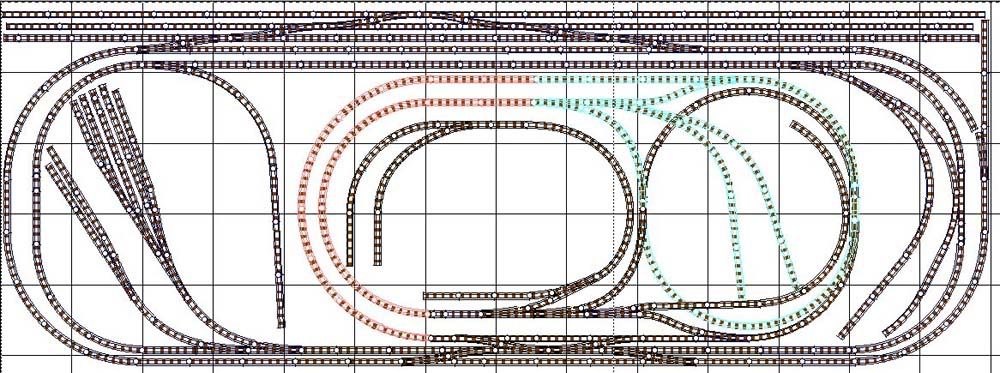The layout here is designed with three mains, for combinations of “rolling scenery”, switching, pickup/spotting, and access to and from hidden staging. At any given time, at least two trains are expected to be “rolling scenery”, while operations take place along the middle, third, mainline, interacting dynamically over time with respect to the rolling scenery consists.
This is the general trackplan, (minor modifications not shown, due to a PC crash and un-availability):

At the center, there’s a two level folded dogbone mainline, with five percent grade, serving the town (and interchange) of Silverton (center), and the Red Mountain mining district (center right). Due to the steep grade, and 15" curves on the Silverton spurs, this track is limited to smaller locomotives, 2-8-0s, 4-6-0s, geared, and in modern diesel mode, 4 axle power.
Just outside that, there’s an oval mainline that serves the Durango yard and locomotive service area/MOW plant, (far left) ,which connects to the Silverton line via the interchange at front center.
At the outer edge, there’s an oval mainline connecting hidden staging at the rear of the layout to the middle oval main.
Much of the trackwork is hidden under terrain, with purple ridges and subsidiary ridgelinesshown in this image being rugged mountains, and blue features being waterways and drainages:

Most operations will be combinations of the following basic maneuvers:
-
Building and re-organizing trains at the Durango yard.
-
Breaking down trains delivered to Silverton into 2-4 car consists for delivery to Red Mountain.
-
Numerous short consist deliveries to Red Mountain, and pickups from the mines there, mostly coal for steam power, silver ore headed down to the Durango smelters, and groc



